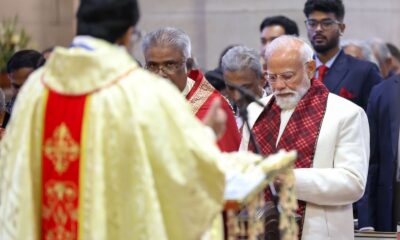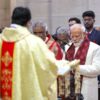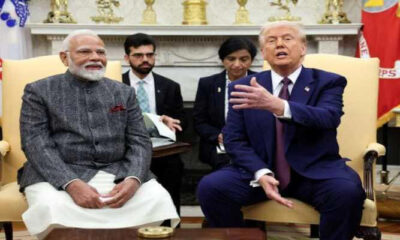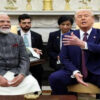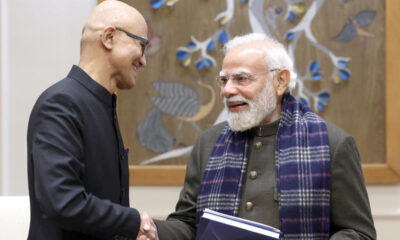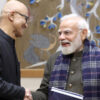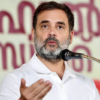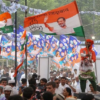Voting Without Citizenship? Aadhaar’s Role Explained
Aadhaar Isn’t Proof of Citizenship—So How Did Non-Citizens Get Voting Rights in India?
The Election Commission of India (ECI) is currently conducting an intensive revision (SIR) of electoral rolls, beginning with Bihar. The objective is clear: to weed out non-citizens who may have been inadvertently or deliberately included in the voter list. But this nationwide exercise has sparked a critical question—how did non-citizens become voters in the first place?
At the heart of this debate lies Form 6—used by individuals to apply for inclusion in the electoral rolls. Unlike what one might expect, Form 6 does not ask for proof of citizenship. It merely requires a declaration of citizenship along with documents that prove age and residence. Aadhaar, which is widely accepted as a valid ID across government and private platforms, can be submitted as part of this process. But here’s the catch—Aadhaar is not proof of Indian citizenship.
The Crux of the Problem: Form 6 and Aadhaar
Form 6 was introduced under the Registration of Electors Rules, 1960, and is meant to be used by Indian citizens aged 18 and above to register to vote in their place of residence. However, despite the rise in illegal immigration and increasing political concerns around demographic changes in sensitive border areas, Form 6 remains fundamentally unchanged.
One of the most contentious issues is that Form 6 doesn’t mandate applicants to submit documents proving they are Indian citizens. A self-declaration suffices. As political analyst Amitabh Tiwari notes, “In Form 6, the word ‘Aadhaar’ is mentioned six times. The word ‘citizen’ appears only twice.” This disparity in emphasis is not just symbolic—it has opened a loophole large enough for non-citizens to exploit.
This is precisely how Aadhaar, a document issued for identity purposes under the Aadhaar Act, has become a backdoor into the electoral system. Despite repeated clarifications by the Election Commission and UIDAI that Aadhaar is not a proof of citizenship, it continues to be accepted in voter registration.
Intensive Revision vs Summary Revision: A Long Overdue Check
The current exercise in Bihar is the first such intensive revision since 2003-2004. Over the past two decades, only summary revisions—meant for correcting minor errors and adding new voters—have been conducted. Without rigorous vetting mechanisms, this has led to millions of questionable entries into the electoral rolls.
The EC’s special drive in Bihar includes a door-to-door verification and the requirement for one of 11 documents to validate an individual’s citizenship. These documents include a birth certificate, passport, matriculation certificate, domicile certificate, caste certificate, or pension order. Aadhaar, PAN, and driving licenses are notably missing from this list because they do not establish citizenship.
The exclusion of Aadhaar has sparked a political storm. RJD leader Tejashwi Yadav questioned why his wife’s Aadhaar was valid for voter registration but is now being rejected as proof under the current SIR. The EC clarified that while Aadhaar can be used as supporting ID in Form 6, it cannot prove either citizenship or place of birth.
The Political and Legal Battle
This debate has reached the Supreme Court, with opposition parties challenging the EC’s move. They claim the timing of the exercise is politically motivated, coming just ahead of elections in Bihar. Critics argue that the exclusion of commonly held documents like Aadhaar from the list of acceptable proofs will disenfranchise poor and marginalized voters.
But supporters of the EC’s drive argue that the larger issue is national security and the sanctity of the democratic process. If illegal immigrants—some of whom may have acquired Aadhaar through dubious means—are voting in Indian elections, the very foundation of electoral democracy is compromised.
A 2016 statement by then Minister of State for Home Affairs, Kiren Rijiju, estimated that India had 20 million illegal Bangladeshi immigrants. Many have settled in states like Assam, West Bengal, and Bihar, significantly altering local demography. This adds a serious dimension to the voter fraud discussion, particularly in politically sensitive regions.
Systemic Flaws: An Incentive to Add Voters
The current system of voter enrolment is not just vulnerable—it’s incentivized to enroll more people, not necessarily the right people. Booth Level Officers (BLOs) and Block Level Agents (BLAs) of political parties are often involved in helping individuals fill out Form 6, with the assumption that more voters mean a better chance of electoral victory.
Former Chief Election Commissioners have acknowledged this issue. One such former CEC told India Today Digital that the process of adding first-time voters has turned into a “sales target job,” where quantity often trumps quality.
He admitted that Form 6 and the larger electoral enrolment process need an overhaul in light of rampant illegal immigration and easy misuse of documents like Aadhaar.
The Limitations of Aadhaar
Aadhaar was introduced as a unique identity number to ensure efficient delivery of government services. It was never intended to be used as proof of citizenship. UIDAI CEO Bhuvnesh Kumar emphasized this point, stating: “Aadhaar is never the first identity.”
Despite that, Aadhaar has become the default ID proof for millions of Indians—and potentially non-citizens as well. The proliferation of fake Aadhaar cards, the ease of procurement, and the lack of robust cross-verification with citizenship databases have made it a weak link in the electoral chain.
Even former CEC Ashok Lavasa reiterated that Aadhaar cannot establish a person’s status as a citizen. Yet, in the absence of stringent requirements in Form 6, it continues to facilitate entry into the voter rolls.
The Way Forward: Reforming the Voter Registration Process
Experts argue that periodic cleanups like the ongoing SIR are necessary, but not sufficient. The real fix lies in addressing the entry point—Form 6 itself.
Political analyst Amitabh Tiwari recommends making citizenship documents mandatory for all first-time voters. “There is always pressure on the EC to maximize voter registration numbers. This leads to a lower benchmark for verification,” he says.
This approach would not only prevent non-citizens from registering but would also eliminate the need for massive cleanup operations every few years.
Additionally, the EC needs to work on integrating voter registration with digital citizenship records. India still lacks a centralized citizenship database, making cross-verification difficult. Introducing a unique citizenship ID number or linking electoral rolls with documents like passports or birth certificates may offer a better long-term solution.
Conclusion: Protecting the Sanctity of the Vote
At its core, the issue is not about Aadhaar or any other identity document—it is about protecting the right to vote as an exclusive privilege of Indian citizens. The ongoing revision in Bihar is a wake-up call. It has exposed the fragile architecture of our voter registration system, built on trust and self-declaration rather than verification.
The Election Commission, lawmakers, and civil society must come together to close the loopholes. India cannot afford to let illegal immigrants or non-citizens determine its democratic future.
What’s needed now is not just a cleanup, but a systemic reboot—beginning with a revision of Form 6 and a clear national policy that separates identity from citizenship.



